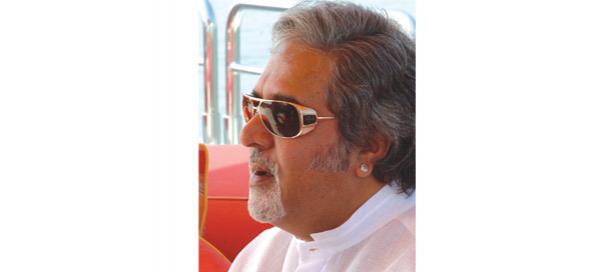Dhaleta Surender Kumar analyses the fall of a high-flying business
The King of Good Times is literally going through Bad Times. Kingfisher Airlines (KFA), that was launched in 2005 with much fanfare, was termed as the “first full frills – true value carrier” and one word that people associated it with is ‘Experience’. However, today, the experience is turning out to be a nightmare for both Dr Vijay Mallya and the passengers, with flights being grounded, pilots, cabin crew and ground staff on a mass exodus due to nonpayment of salaries for months. While Dr Mallya is in talks with all – banks, government and foreign airlines - to resurrect the sinking airline, there are questions being asked whether KFA is a marketing disaster.
The answer is a simple ‘No’. Dr Mallya has lived a life in style and wanted his passengers to fly in style. He provided the means for that. The company had identified over 300 touch-points – right from the first brand contact via travel agent or its website to smartly dressed Kingfisher help (read baggage handlers or valet service) at the airports to the entire in-flight experience with Live TV and meal offering with about six different choices on the menu. All this led to its promise: ‘Experience’.
Market segmentation was right – Sec A, Sec B in the age group of 25-45 years and married young professionals with kids in the age group of 20-35 years with an annual income of more than Rs 7 lakh, and aspiring flamboyants. An all women in-cabin crew, oops! Flying models wore designer red short dresses. Advertising was at its peak. Deepika Padukone was hired as the face of the brand. Amidst all this, Jet Airways was “made” to change.
So if everything was right, what went wrong? KFA is more of a business failure than a marketing failure. The only marketing failure I can find out in the entire gamut of things was the takeover of Air Deccan and formation of Kingfisher Red, thereby diluting the brand value of KFA.
Going from A to B still
At the outset, Dr Mallya wanted to change the thought or wanted us to believe that airlines were no more a means of going from place A to B. Even after almost seven years of KFA’s existence, airlines still remain a mode of transport from place A to B. I would like to believe that CEOs of multinationals like HUL, P&G, RB and the like travel first class. I was proven wrong by one of the CEOs of the mentioned companies who was travelling economy class from Delhi to Mumbai last month.
In-flight interruption
Unlike road or rail transport, where there’s much of scenery around to keep you busy, flights are usually boring. Much of the travel through flights between metros is covered in less than two hours. In-flight entertainment or a movie is started only after the seat-belt signs are off. And then there’s interruption of meals being served. Most passengers on domestic flights are not looking forward to in-flight entertainment. They want to reach their destination on time. In-flight entertainment can be handy for a weary traveller on international circuits only. While from a marketing perspective, offering inflight entertainment to keep one busy for two or more hours was/is a smart move, it adds up to infrastructural costs.
Porter baggage
As KFA covered about 30 destinations, and hypothetically speaking, if it has even five groundsmen for valet service at each airport – that means 350 people assigned for the job. Hypothetically again, if their salaries are a minimum of even Rs 10,000 per month, that means a monthly expenditure of Rs 35 lakh just for valet service. But I am sure the workforce for the job must be much larger than the hypothesis and the salaries too must be much higher than assumed.
Fair fares?
While KFA truly offered a premium and luxury service, it took pride in calling itself a budget airline. It refrained from calling itself an LCC (low-cost-carrier) as its fares were higher than the LCCs, but it kept its fares lower than Jet Airways, Indian Airlines (now Air India) and the erstwhile Sahara.
Burning fuel
Amidst this all, Dr Mallya forgot that he was operating in a business where fuel costs are variable and taxes are discretionary. Add to all this the costs of high-blitz advertising, including the deal with Ms Padukone, putting up exclusive lounges at airports, gourmet cuisine, tele-booking centres, the expansive and expensive frills (touch-screen seat controls, sensuous mood lighting, unique starry sky, in-seat chargers, inseat massagers, an exclusive amenity kit and facilities like jacket ironing, music streaming through Bose noise cancellation headphones) in Kingfisher First… aircraft costs, acquisition costs of Air Deccan… and what not. It was a clear case of the proverb “Aamdani atthani, kharcha rupaiya” coming true.
How to fly smart!
On the other hand, Indigo, is one success story, which more than on the frills concentrated and boasts about its on its on-time service, and that has paid it dividends. While KFA decided to fly “five star”, Indigo flies ‘Smart’. And boasting about being more than 95 per cent time on-time, still tells the story that airlines In India still are a means of going from place A to B and there’s a long way to go before the Indian fliers would fly for an ‘Experience’.
Feedback: surender@pitchonnet.com























